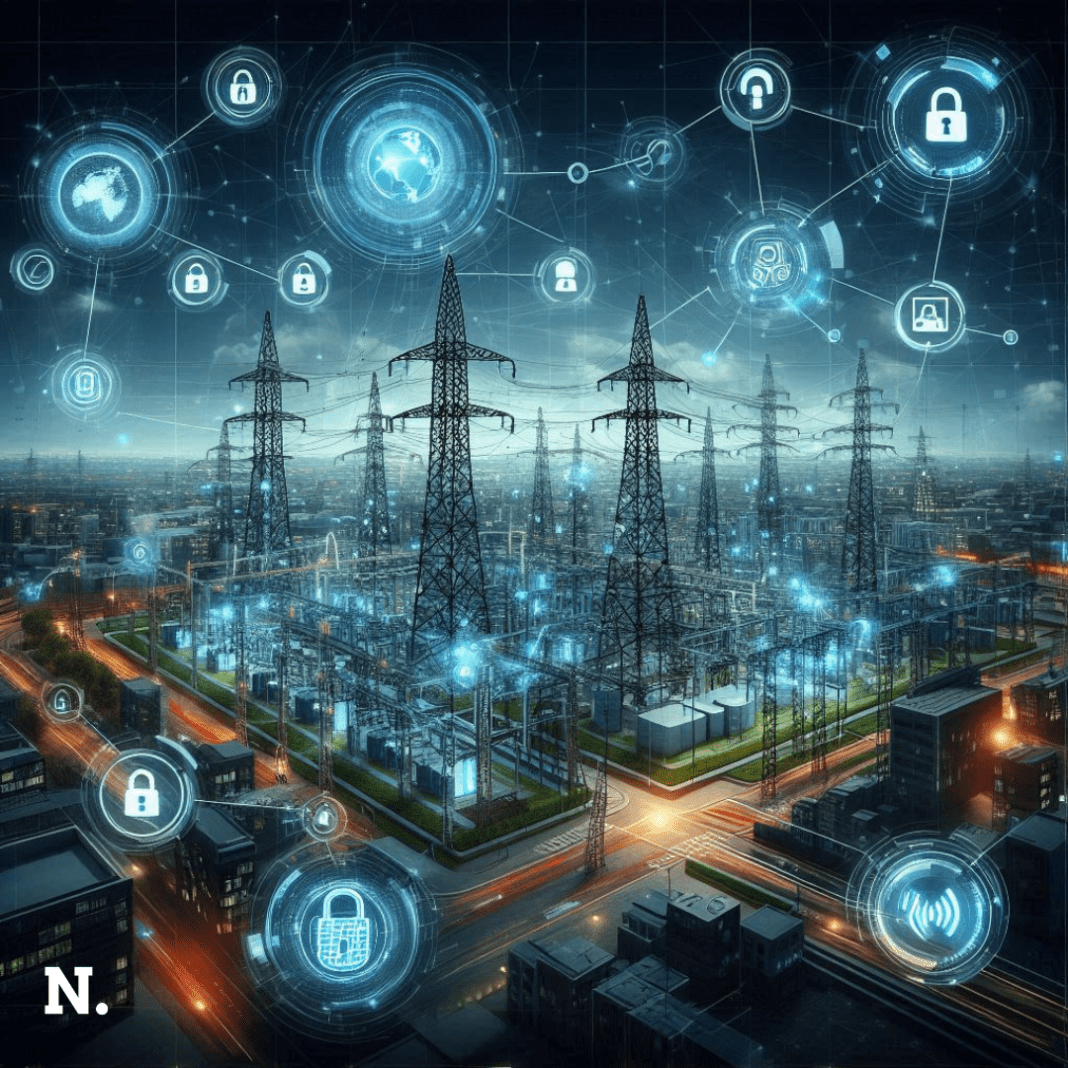Cyberattacks on power grids pose an increasing and grave threat to human lives and critical infrastructure. Power grids are responsible for delivering electricity to homes, businesses, and essential services, making their stability crucial to the functioning of modern society. A successful attack on the grid can result in widespread power outages, disrupting hospitals, emergency services, and basic amenities like water supply and communication networks.
These disruptions can escalate quickly, creating life-threatening situations, especially when the affected areas include densely populated cities or regions. This is the third article in the series of How Cyber Attacks Endanger Human Lives. CA Mayur Joshi, a Director at EC-Council and an Information Security Expert, has conceptualized this series. He’ll also explore the electricity system across the United States, including the Eastern Interconnection, Texas Interconnection, and Western Interconnection, and how the Federal Energy Regulatory Commission (FERC) and other stakeholders work to protect the grid.
What Are Cyberattacks on Power Grids?
Cyberattacks on power grids target the complex networks that manage the generation, distribution, and transmission of electricity. The electric power infrastructure relies on interconnected systems that coordinate everything from electricity generators in power plants to the delivery of power to homes and businesses. These systems are vulnerable to cyberattacks, as they use advanced digital technologies to control and monitor the flow of electricity. A cyberattack could disable key components of the electricity system, such as control centers or grid operators, which would make it difficult or impossible to manage power flows. Without proper oversight, higher voltages could damage equipment, or outages could spread rapidly across regions.
The electrical grid is the backbone of modern society, delivering power to homes, businesses, and industries. However, as power systems evolve into smart grids with advanced technologies like automation, IoT devices, and renewable energy sources such as solar power, they become increasingly vulnerable to cyber threats.
Many power grids in the United States are divided into three main interconnections: the Eastern Interconnection, which serves areas east of the Rocky Mountains, the Western Interconnection, and the Texas Interconnection. Each of these systems is composed of electricity generators, transmission lines, and distribution networks that deliver power to consumers. Power generation can come from renewable energy sources such as solar or wind, as well as traditional sources like coal and natural gas. Any disruption to the electricity supply caused by cyberattacks could have serious consequences for the stability of the entire power grid.
Cyberattack Catastrophe: How Hackers Can Endanger Human Lives ?
How Do Cyberattacks on Power Grids Work?
Cyberattacks on power grids typically target the software and communication systems that manage the grid’s operations. The most common form of attack involves the use of malware, which is designed to infiltrate critical systems and disable them. Once hackers gain access to the grid’s control systems, they can alter settings, shut down electricity generators, or manipulate the flow of power to cause widespread outages.
These attacks can also target specific components of the grid, such as power distribution systems or power plants, to cause localized blackouts. One example is when hackers plant malware in the industrial control systems that manage electricity supply, which allows them to control the physical infrastructure remotely.
In many cases, hackers behind these attacks have sophisticated knowledge of the power grid and its vulnerabilities. For instance, they may target grid operators or system administrators who have access to key parts of the electricity system. Federal Energy Regulatory Commission (FERC) regulations require utilities to follow stringent cybersecurity protocols, but attackers can still find ways to exploit weaknesses in these systems. Additionally, geopolitical conflicts, such as the tensions between the U.S. and foreign nations, can increase the risk of state-sponsored cyberattacks on critical infrastructure.
How Water Supply Attacks Endanger Communities ?
Real-Life Examples of Power Grid Cyberattacks
One of the most significant examples of a cyberattack on a power grid occurred in Ukraine in 2015. Hackers successfully penetrated the control systems of multiple power plants, leading to widespread blackouts that affected more than 230,000 people. The attack was carried out using malware that disabled the electricity generators and disrupted the normal operation of the electricity system. This attack highlighted the vulnerability of power grids to cyber threats, especially in times of geopolitical tension.
Crashoverride, also known as Industroyer, was a sophisticated malware that targeted Ukraine’s power grid in December 2016. It caused widespread outages in Kiev, marking the second known instance of a cyberattack disabling a power grid. The malware was designed to interact with industrial control systems (ICS) that manage power infrastructure. What made Crashoverride particularly dangerous was its modular design, which can be adapted to attack different types of critical infrastructure. This attack showcased the growing risk of cyber threats targeting essential services, potentially causing physical harm or widespread disruption.
Similarly, in 2020, Chinese hackers linked to the group APT41 were reported to have targeted the electric power infrastructure in India, potentially laying the groundwork for future disruptions.
In the United States, concerns have also been raised about cyberattacks on critical infrastructure, including the electricity supply. The Federal Energy Regulatory Commission (FERC) has been working with utilities to improve the resilience of the grid, but hackers continue to probe for weaknesses.
In recent years, state-sponsored hacking groups have targeted the Eastern Interconnection and Western Interconnection, attempting to infiltrate the control systems and plant malware that could be used to cause widespread blackouts. The Texas Interconnection is also vulnerable, as it operates largely independently from the other two systems, meaning that an attack there could have significant consequences without the ability to rely on backup power from neighboring states.
Critical Vulnerabilities: The Dark Side of Pacemaker Technology
The Impact of Cyberattacks on Human Lives
The consequences of cyberattacks on power grids can be far-reaching, endangering human lives in multiple ways. Without electricity, hospitals may be unable to perform life-saving surgeries, and emergency services may struggle to respond to crises. Water treatment plants, which rely on electric power to purify drinking water, could fail, leading to shortages of clean water. Additionally, transportation systems, communication networks, and other critical services depend on electricity, and their failure can create chaos and panic. The cascading effects of a power outage can cripple entire regions, as demonstrated by the widespread blackouts seen during past electric power failures.
In areas east of the Rocky Mountains, where the Eastern Interconnection supplies power to millions of people, the loss of electricity could have devastating effects on densely populated urban centers. In addition to the direct dangers posed by power outages, cyberattacks on the grid can also cause long-term economic damage. Businesses that depend on a reliable electricity supply may suffer massive losses, and recovery from a widespread outage can take weeks or even months. The Federal Energy Regulatory Commission (FERC) and other agencies are working to mitigate these risks by enhancing cybersecurity protocols, but the potential for future attacks remains high.
Defending the Power Grid Against Cyberattacks
Defending the power grid from cyberattacks requires a multi-faceted approach that involves both technological and regulatory solutions. Grid operators need to invest in advanced cybersecurity technologies that can detect and respond to threats in real-time. This includes monitoring for unusual activity in the electricity system, patching vulnerabilities in software, and training personnel to recognize and respond to cyberattacks. Additionally, power plants and electricity generators should be equipped with redundancies that allow them to continue operating even in the event of a cyberattack.
On the regulatory front, the Federal Energy Regulatory Commission (FERC) and other government agencies are responsible for ensuring that utilities follow strict cybersecurity guidelines. These regulations are designed to protect critical infrastructure, including the Eastern Interconnection, Texas Interconnection, and Western Interconnection, from potential threats. As the use of renewable energy sources continues to grow, it is also important to ensure that these systems are not vulnerable to attack. Protecting the grid from cyberattacks will require ongoing cooperation between government, industry, and international partners to address emerging threats and ensure the safety and security of the electric power infrastructure.
Cyber Attacks on Connected Cars
In conclusion, cyberattacks on power grids represent a significant danger to human lives and the stability of critical infrastructure. As these attacks become more sophisticated, it is essential that governments and industry leaders work together to protect the electricity system from future threats. From the Eastern Interconnection to the Western Interconnection, ensuring the resilience of the grid is vital to the safety and well-being of millions of people across the United States




